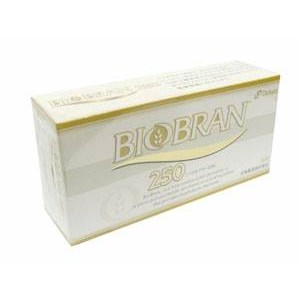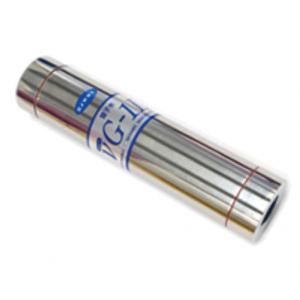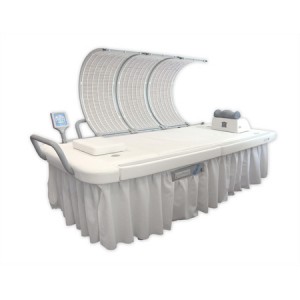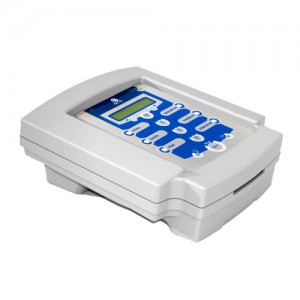QRS Research Directory P
Peer-reviewed abstract on the effects
of magnetics on physical ailments
The impact of treatment with magnetic fields on a variety of
physical ailments are presented in the following descriptions of recent
studies, published in peer-reviewed scientific journals.
Pancreatitis
This study found that sinusoidal and continuous
low-frequency alternating magnetic field generated a Polius-1 apparatus
exhibited beneficial effects in patients suffering from chronic pancreatitis.
A.A. Fedorov,
The Use of a Low-frequency Magnetic Field in the Combined Therapy of Chronic
Pancreatitis, Vopr Kurortol
Fizioter Lech Fiz Kult, (5),September-October 1990, p. 28-30.
This controlled study examined the
effects of combining pulsed electric stimulation and laser light with
conventional treatment in patients suffering from acute pancreatitis. Results
showed the combined therapy to have the most significant effects in patients
with severe forms of the disease.
O.G. Savina, A
Low-Frequency Pulsed Current and a Low-Intensity Laser Radiation in the
Treatment of Acute Pancreatitis,Vopr Kurortol Fizioter Lech Fiz Kult, (2),
1995, p. 39-40.
Parkinson's Disease
This article reports on the case of a
73-year-old male Parkinson's patients suffering from disabling resting and
postural tremors in the right hand, as well as other symptoms. Two successive
20-minute treatments with AC pulsed electromagnetic fields of 7.5-picotesla
intensity and 5-Hz frequency sinusoidal wave led to improvements in
visuospatial performance and a legible signature. Significant improvements in
Parkinsonian motor symptoms were also seen following additional treatments.
R. Sandyk,
Brief Communication: Electromagnetic Fields Improve Visuospatial Performance
and Reverse Agraphia in a Parkinsonian Patient, International Journal of
Neurosci, 87(3-4), November 1996, p. 209-217
This article reports on the case of a
medicated 61-year-old Parkinson's patient who experienced rapid reversal of
symptoms following a single external application of picotesla-range magnetic
fields.
R. Sandyk R.P.
Iacono, Reversal of Visual Neglect in Parkinson's Disease Treatment with
picoTesla Range Magnetic Fields,International Journal of Neurosci, 73(1-2),
November 1993, p. 93-107.
This article reports on four Parkinson's patients who
experienced significant improvement in symptoms following treatment with
picotesla-range magnetic fields. Two additional patients suffering from
Parkinson's-related dementia experienced significant improvements in
visuospatial impairment.
R. Sandyk,
Magnetic Fields in the Therapy of Parkinsonism, International Journal of
Neurosci, 66(3-4), October 1992, p. 209-235.
Noting that transcranial magnetic stimulation (TMS) is a new
and noninvasive method of direct cortical neuron stimulation, this review
article discusses recent studies showing that TMS has led to improvements in
symptoms associated with Parkinson's disease and depression.
M.S. George, et al., "Transcranial
Magnetic Stimulation: A Neuropsychiatric Tool for the 21st Century,"
Journal ofNeuropsychiatry Clin Neurosci, 8(4), Fall 1996, p. 373-382.
Results of this study showed that the application of ELF
magnetic fields via a plastic helmet device housing a set of coils (generating
fields of 8 Hz and 7.5 pT) produced beneficial clinical effects after 30
minutes in patients suffering Parkinson's disease and multiple sclerosis.
J. Bardasano,
Extracranial Device for Noninvasive Neurological Treatments with Pulsating ELF
Magnetic Fields, SecondWorld Congress for Electricity and Magnetism in Biology
and Medicine, 8-13 June 1997,
Bologna, Italy.
This article reports on the cases of
two Parkinson's patients who experienced improvements in motor symptoms
following treatment with external
application of weak electromagnetic fields in the picotesla range.
R.Sandyk,Parkinsonian Micrographia
Reversed Treatment with Weak Electromagnetic Fields, International Journal
ofNeurosci, 81(1-2), March 1995,
p. 83-93.
This article reports on the cases of
three Parkinson's patients on full medication who exhibited an improvement in
right hemispheric functions
following a series of treatments with external application of electromagnetic
fields in the picoteslarange.
R. Sandyk,
"Improvement in Short-term Visual Memory Weak Electromagnetic Fields in
Parkinson's Disease, International Journal
of Neurosci, 81(1-2), March 1995,
p. 67-82.
This article reports on the case of a
nonmedicated 49-year-old male Parkinson's patient who experienced a dramatic
improvement in motor, depressive, and cognitive symptoms following treatment
with brief extracranial applications of picotesla-range electromagnetic fields.
R. Sandyk,
"A Drug Naive Parkinsonian Patient Successfully Treated with Weak
Electromagnetic Fields, International Journal
of Neurosci, 79(1-2), November
1994, p. 99-110.
This article reports on the case of a
61-year-old Parkinson's patient who experienced improvements in the severity of
motor problems 30 minutes after treatment with external application of weak
electromagnetic fields in the picotesla range. Sham treatment had no such
effects in the same patient.
R. Sandyk
R.P. Iacono, Reversal of Micrographia in Parkinson's Disease Application of
picoTesla Range Magnetic Fields, International Journal of Neurosci 77(1-2),
July 1994, p. 77-84.
This article reports on the cases of five Parkinsonian
patients on full medication who experienced a marked improvement in performance
on Thurstone's Word-Fluency Test following treatment with a series of
extremely-low-intensity electromagnetic fields in the picotesla range and of
5-8 Hz frequency.
R. Sandyk,
Improvement in Word-fluency Performance in Parkinson's Disease Administration
of Electromagnetic Fields, International
Journal of Neurosci, 77(1-2), July
1994, p. 23-46.
This article reports on the case of a 69-year-old
Parkinsonian patient who was able to discontinue most medication for two weeks
following two treatment sessions with extracranial picotesla-range magnetic
fields. Symptoms recurred after three weeks and the patient received four more
magnetic field sessions on consecutive days after four weeks. The patient was
then able to discontinue medications completely.
R. Sandyk,
Treatment of Parkinson's Disease with Magnetic Fields Reduces the Requirement
for AntiparkinsonianMedications, International Journal of Neurosci, 74(1-4), January-February 1994, p. 191-201.
This article reports on the cases of five medicated
Parkinsonian patients who experienced improvements in motor, behavioral, and
autonomic functions, and in visuoconstructional tasks following treatment with
extracranial application of magnetic fields in the picotesla range.
R. Sandyk, Reversal of a
Visuoconstructional Deficit in Parkinson's Disease Application of External
Magnetic Fields: A Report of Five
Cases, International Journal of Neurosci, 75(3-4), April 1994, p. 213-228.
This article reports on the cases of three medicated
Parkinsonian patients who experienced relief from disabling periods of freezing
gait following treatment with extracerebral applications of pulsed
electromagnetic fields in the picotesla range.
R. Sandyk,
Freezing of Gait in Parkinson's Disease is Improved Treatment with Weak
Electromagnetic Fields, International
Journal of Neurosci, 85(1-2), March
1996, p. 111-124.
The cases of four nondemented
Parkinsonian patients under full medication are discussed in this article.
These patients performed poorly on human figure drawing tests administered to
measure body image perception. Treatment with extracerebral applications of
picotesla-range intensity electromagnetic fields led to marked improvements in
body image perception as seen on a repeat of the same test each patient.
R. Sandyk,
Improvement of Body Image Perception in Parkinson's Disease Treatment with Weak
Electromagnetic Fields, International Journal of Neurosci, 82(3-4), June 1995,
p. 269-283.
This article reports on the cases of
four medicated Parkinsonian patients who experienced reversal of visuospatial
impairments as measured the Clock Drawing Test following treatment with
externally applied weak electromagnetic fields of picotesla-range intensity.
R. Sandyk,
Reversal of Visuospatial Deficit on the Clock Drawing Test in Parkinson's
Disease Treatment with WeakElectromagnetic Fields, International Journal of
Neurosci, 82(3-4),June 1995, p. 255-268.
This article reports on the case of a 68-year-old male
patient suffering from Parkinson's disease over a period of 7 years. The
patient had experienced little relief from traditional medical therapy.
Treatment with external application of picoteslarange magnetic fields led to
quick improvements with respect to tremor and foot dystonia, gait, postural
reflexes, mood, anxiety, and cognitive and autonomic functions.
R. Sandyk
K. Derpapas, The Effects of External picoTesla Range Magnetic Fields on the EEG
in Parkinson's Disease,International Journal of Neurosci, 70(1-2), May 1993, p. 85-96.
This article reports on the cases of
four Parkinsonian patients who exhibited significant improvements in motor
symptoms following treatment with externally applied magnetic fields of
picotesla-range intensity.
R. Sandyk
K. Derpapas, Further Observations on the Unique Efficacy of PicoTesla Range
Magnetic Fields in Parkinson's Disease, International Journal of Neurosci,
69(1-4), March-April 1993, p. 67-83
This article reports on two cases of
fully medicated Parkinson's patients who experienced enhanced visuoperceptive
functions as measured numerous drawing tests following extracranial treatment
with picotesla-range magnetic fields.
R. Sandyk R.P.
Iacono, Rapid Improvement of Visuoperceptive Functions picoTesla Range Magnetic
Fields in Patients with Parkinson's Disease, International Journal of Neurosci,
70(3-4), June 1993, p. 233-254.
This article reports on the case of a
69-year-old Parkinsonian patient on full medication who experienced a marked
improvement on several different drawing tests following 30 minutes of
treatment with picotesla-range magnetic fields.
R. Sandyk, The
Effects of PicoTesla Range Magnetic Fields on Perceptual Organization and
Visual Memory in Parkinsonism, International Journal of Neurosci, 73(3-4),
December 1993, p. 207-219
This
article reports on the case of a Parkinson's patient suffering from severe
movement problems who received treatment with external artificial weak magnetic
fields with a frequency of 2 Hz and intensity of 7.5 picotesla over a period of
6 minutes. Results showed a significant attenuation in disability and near
total reversal of the symptoms lasting approximately 72 hours. The patient then
applied equivalent magnetic fields on a daily basis at home. Sustained
improvement was seen throughout an observation of one month.
R. Sandyk,
Magnetic Fields in the Treatment of Parkinson's Disease, International Journal
of Neurosci, 63(1-2), March 1992, p. 141-150.
This article reports on the case of a
67-year-old male patient suffering from Parkinson's disease and
levodopa-related motor fluctuations. Treatment with the application of external
weak magnetic fields led to improvements in general Parkinsonian symptoms along
with the amelioration of symptoms.
R. Sandyk,
Weak Magnetic Fields in the Treatment of Parkinson's Disease with the
Phenomenon, International Journal of Neurosci, 66(1-2), September 1992, p.
97-106.
Peripheral Neuritis
In this study, patients suffering from peripheral neuritis
were exposed to high-frequency electromagnetic radiation on acupuncture points.
EMR was generated Electronica-EnF, Aria, and Porog devices with tunable
frequencies ranging between 53 and 78 GHz. Treatments were daily and lasted 25
minutes. Results showed full restoration of nerve function in 87 percent of
patients.
O. Vassilenko
and N.F. Vassilenko, Use of Extremely High Frequency Electromagnetic Radiation
for Treating PeripheralNeuritis, Second World Congress for Electricity and
Magnetism in Biology and Medicine, 8-13
June 1997, Bologna, Italy.
Pneumonia
Results of this study showed that
magnetic laser therapy decreased the severity of acute respiratory
insufficiency and treatment course, and prevented destructive complications in
children with infiltrative acute destructive pneumonia between the ages of 1
and 12 years.
E.A. Gaidashev,
An Evaluation of the Effect of Magnetic-laser Therapy on External Respiratory
Function in ComplicatedForms of Acute Pneumonia in Children, Vopr Kurortol
Fizioter Lech Fiz Kult, (3),May-June 1995, p. 2-14.
Post-Herpetic Neuralgia
This study found both pulsed magnetic field treatment (20-30
minutes per day) and whole body alternating current magnetic field treatment
(30 minutes per day) to be effective therapies for post-herpetic neuralgia in
older patients. Pulsed magnetic field treatment consisted of 0.6-T (6-kG)
samarium/cobalt magnets surrounded spiral coils generating a maximum 0.1-T
pulse. Pads were pasted on the sensory areas innervated the dorsal root of the
spinal cord where there was scar-association pain or paresthesia. Stimuli were
delivered at 280 V and 8 Hz. Alternating current magnetic field treatment
involved a treatment bed consisting of 19 electrodes containing paired coils
and with a maximum magnetic flux density around the electrodes of 0.08 T.
C. Kusaka,
Pulse Magnetic Treatment and Whole-Body, Alternating Current Magnetic Treatment
for Post-HerpeticNeuralgia, Journal of Japanese Biomagnetism
Bioelectromagnetics Society, 8(2),1995, p. 29-38.
Pseudoarthrosis
In this study, 92 congenital
pseudoarthrosis patients received treatment with pulsing electromagnetic
fields. Results indicated a 76-percent rate of lesion recovery.
J.S. Kort, et
al., Congenital Pseudoarthrosis of the Tibia: Treatment with Pulsing
Electromagnetic Fields, Clin Orthop, (165), May 1982, p. 124-137.
In this study, 34 patients with congenital
pseudoarthrosis-associated infantile nonunions received treatment with pulsing
electromagnetic fields. Results indicated that 50 percent experienced full
healing, 21 percent experienced healing with need for protections, and 29
percent experienced failure. The majority of failures were among men with a
history of early fracture. Following the demonstration of coil effects, the
PEMF treatment was combined with surgical realignment, immobilization, and
grafting.
C.A.
Bassett, Congenital Pseudarthroses of the Tibia: Treatment
with Pulsing Electromagnetic Fields, Clin Orthop, (154), January-February 1981,
p. 136-148.
In this study, 29 congenital pseudoarthrosis patients received
extremely-low-frequency pulsing electromagnetic fields. Results: Over 70
percent experienced full healing, 21 percent experienced healing with need for
protections, and 29 percent experienced failure. The majority of failures were
among men with a history of early fracture.
C.A.
Bassett, A Non-operative Salvage of Surgically-resistant
Pseudarthroses and Non-unions Pulsing ElectromagneticFields. A Preliminary
Report, Clin Orthop,May 1977, p. 128-143.
In this article, the authors report on
their own clinical use of electrodynamic field therapy in the treatment of 271
pseudoarthrosis patients over a period of 8 years. They report bony healing in
92 percent of such cases.
F. Lechner,
Treatment of Infected Pseudoarthroses with Electrodynamic Field Therapy,
Fortschr Med, 97(20), May 24, 1979, p. 943-949.
This study examined the effects of
pulsed electromagnetic fields on 91 patients with congenital pseudoarthrosis of
the tibia. Results showed an overall success rate of 72 percent.
C.A. Bassett
M. Schink-Ascani, Long-term Pulsed Electromagnetic Field (PEMF) Results in
Congenital Pseudarthrosis,Calcif Tissue Int, 49(3), September 1991, p. 216-220.
Results of this study indicated that
treatment with pulsed electromagnetic fields had beneficial effects in children
suffering from congenital pseudoarthrosis.
M.L. Sutcliffe
A.A. Goldberg, The Treatment of Congenital Pseudoarthrosis of the Tibia with
Pusling Electromagnetic Fields: A Survey of 52 Cases, Clinical Orthop, (166),
1982, p. 45-57.
Results of this study indicated that
pulsed electromagnetic fields (72 Hz) can be an effective therapy for patients
suffering from lesions associated with congenital pseudoarthroses when
treatment is combined with appropriate orthopedic management.
J.S. Kort
C.A.L. Bassett, Role of Electricity in the Treatment of Congenital
Pseudoarthrosis of the Tibia, Reconstr Surg Traumatol, 19, 1985, p. 140-146.
Psychiatric Disorders
Noting the well-established dangers
associated with electroconvulsive therapy, the author, in this theoretical
article, argues that transcranial magnetic stimulation should be looked at as
an alternative psychiatric treatment. The author asserts that TMS has several
advantages over ECT in that it is painless, noninvasive, and more effective on
deep structures of the brain.
T. Zyss, Deep Magnetic Brain Stimulation - The End of Psychiatric Electroshock Therapy? Medical Hypotheses, 43(2), 1994, p. 69-74.
There are no products to list in this category.




